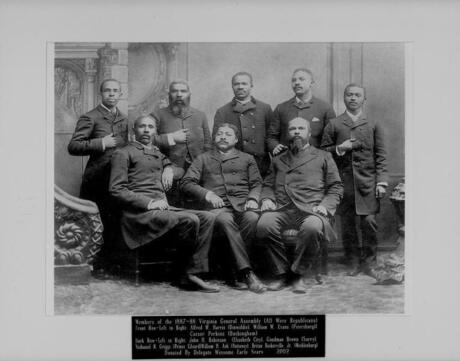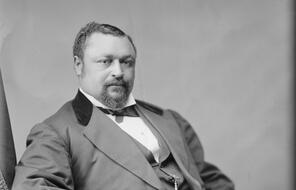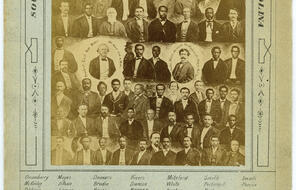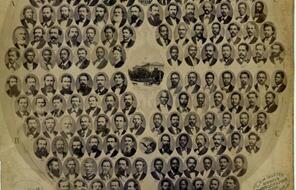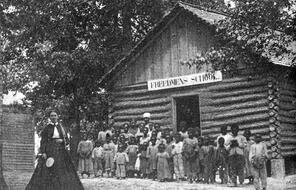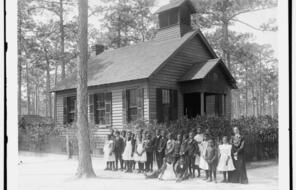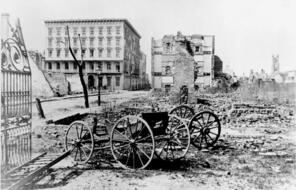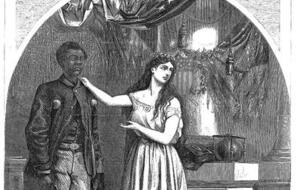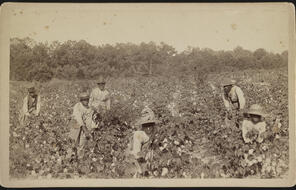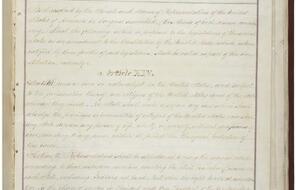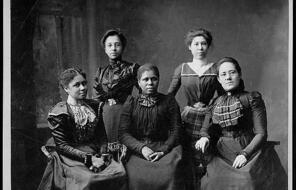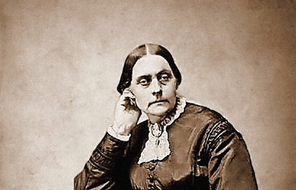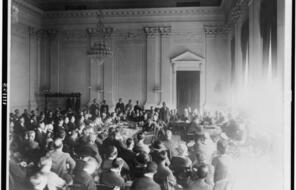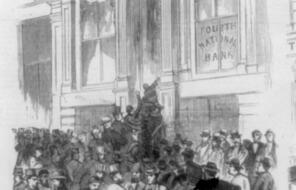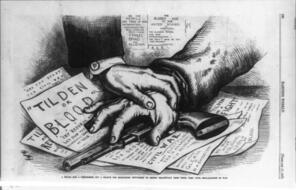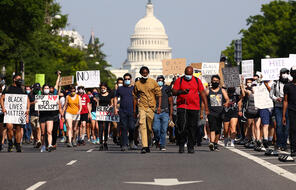The “unprecedented experiment in interracial democracy”
that resulted from the policies of Radical Reconstruction is a story largely unknown to many Americans. The laws passed by the Republican Congress in the late 1860s constituted a momentous expansion of civil and political rights in the United States, and they were followed by an equally unparalleled increase in civic participation and social transformation. Millions of freedpeople, as well as thousands of Black Americans in the North, were no longer prohibited from voting in the United States, and they were eager for their voices to be heard. Historian Eric Foner writes:
Never before in history had so large a group of emancipated slaves suddenly achieved political and civil rights. And the coming of black suffrage in the South in 1867 inspired a sense of millennial possibility second only to emancipation itself. Former slaves now stood on equal footing with whites, declared a speaker at a mass meeting in Savannah; before them lay “a field, too vast for contemplation.”
It is important for students to understand the unparalleled nature of the expansion of political and civil rights in the United States under Radical Reconstruction and the impact this expansion had on life in the South, where the majority of African Americans lived at the time. Although it didn’t last, for reasons that future lessons will explore, this period of interracial democracy is considered by historians to be one of the successes of the Reconstruction era.
A Revolution in African American Political Participation
Once Radical Reconstruction policies were enacted in 1866 and 1867, Black Southerners joined civic organizations, such as Union Leagues, en masse. Meeting in schools and churches, Union Leagues educated freedpeople on the workings of politics and government. They instructed them on the responsibilities of jury duty and offered advice on entering into contracts. The leagues also organized rallies and parades in support of local, state, and national political issues.
These civic groups provided a foundation from which African American political leaders at all levels of government would emerge. Historians believe that the number of Black officeholders in federal, state, and local governments during Reconstruction peaked at about 2,000. This was a dramatic change in the life and government of the South, only a decade removed from the Supreme Court’s Dred Scott decision, and this number of Black officeholders was unmatched until after the Voting Rights Act of 1965. According to Eric Foner, “It is safe to say that nowhere do black officials as a group exercise the political power they enjoyed in at least some Southern states during Reconstruction.”
Sixteen African Americans were elected to Congress, and several dozen more were appointed to federal government posts. More than 600 were elected to Southern legislatures, and hundreds more served in local government positions such as justice of the peace, registrar, city councillor, and county commissioner.
A Coalition of Outsiders
Despite the unprecedented influence of Black voters and elected officials during Reconstruction, it is also important to note that African Americans never constituted a majority in the Republican Party, only one African American held the governorship of a state, and in only one state (South Carolina between 1872 and 1876) did African Americans hold a majority in either house of a state legislature.
Nevertheless, the Republican Party supported the rights of African Americans by controlling state and local governments across the South under Radical Reconstruction. Black votes, while essential, were not solely responsible for the Republican Party’s ascendance; the party needed support from white Republicans to cement an effective political coalition. Historian Steven Hahn describes the coalition that transformed Southern politics:
[D]uring Radical Reconstruction there was a shift away from the former slave-holding elite toward a collection of groups who had been outsiders to the formal arenas of southern politics. They included white northerners who had served in the U.S. Army and Freedmen’s Bureau, had taken up planting or merchandising, or had been engaged in teaching and missionary work; white southerners who had been Unionists or unenthusiastic Confederates, had been nonslaveholders and small slaveholders, or had lived beyond the immediate orbit of the planter class; black northerners, some having escaped from slavery, who had acquired education and skills, had joined the Union military effort, or had served as ministers and missionaries . . . ; and black southerners who either had been free before the Civil War or had gained their freedom as a result of it. Together, they were substantially less wealthy, less experienced politically, and less committed to perpetuating the old plantation order. And together, they usually owed their positions to black slaves.
Thus the policies of Radical Reconstruction led to Southern state governments in which white and Black men alike voted and held elective office. This transformation, spurred on by the codification of the idea of equality in both law and the Constitution, prompted Americans of every gender, race, ethnicity, and class to begin to assert themselves as equal members of American society.
